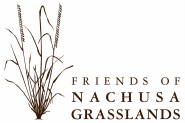Cashew Family (Anacardiaceae)How can I recognize a member of the cashew family?
|
Crowfoot Family (Ranunculaceae)How can I recognize a member of the thimbleweed family?
|
smooth sumacRhus glabra
Dye hard! This common shrub (in all 48 continental states) does not carry the urushiol irritant. In fact, a lovely lemonade can be made of the ripe fruits by soaking and straining. All parts of smooth sumac can be made into natural dyes for cloth or other fibers. It seems that the only insect (in adult and larva forms) that can eat sumac leaves due to strong chemical compounds is the leaf beetle, Blepharida rhois. The beetle larva puts its concentrated feces on its back to deter predators. Male or Female? Smooth sumac Individuals are either male or female and can grow in large colonies and shade out all other plants. The fire regime here keeps these colonies short. One of the last shrubs to leaf out in spring, the compound leaves turn a brilliant red in the early autumn. Scientific name origins: Rhus is the classic Latin name for this genus of plants that often have the irritant, urushiol. Glabra is Latin for smooth. |
thimbleweedAnemone cylindrica
The flowers are 5 white petal-like sepals topped by a greenish-white flower with an elongated center which, being bumpy, resembles a thimble used to protect fingers from a sewing needle. The seeds are surrounded by cottony tufts and are often found in mouse nests as insulation! There are many species of Anemone in North America (25 or more). They are not usually eaten by mammals due to the burning sensation it creates in the mouth and stomach. Scientific name origins: Anemone is from the Greek and means daughter of the wind. The seed head of this anemone is cylindrical in shape, hence its specific name. |
